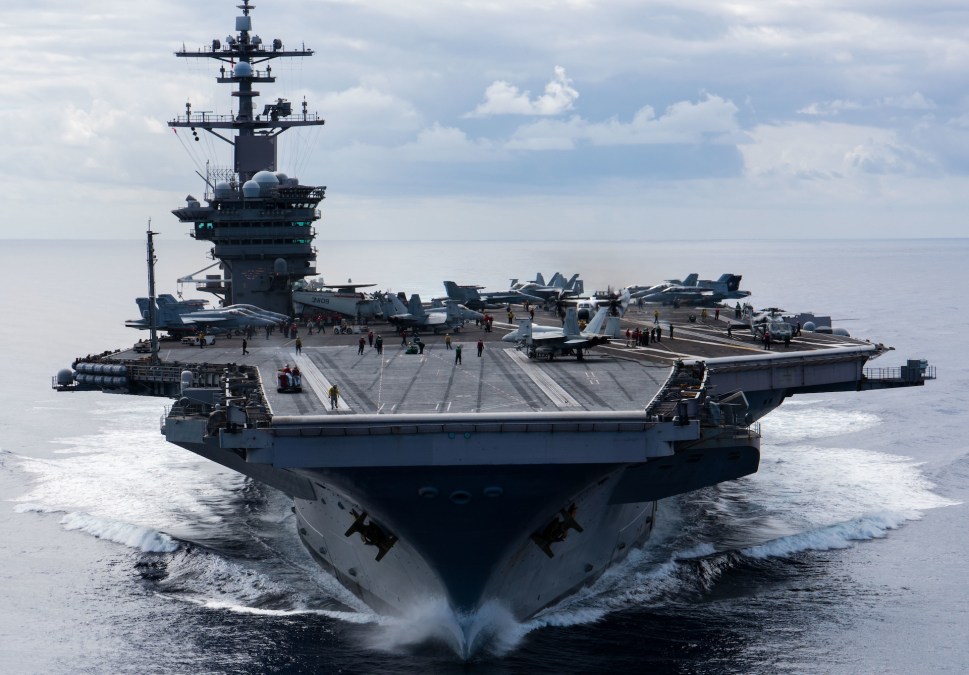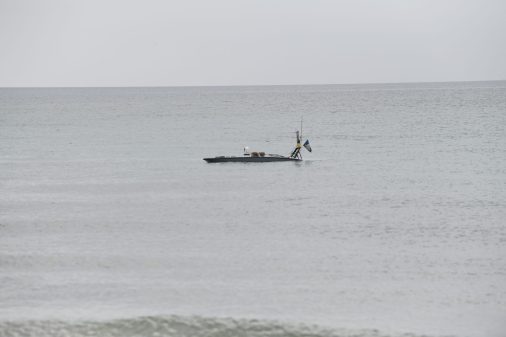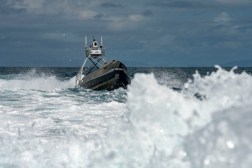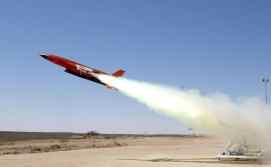Navy exploring new concept to ‘replicate ashore training range capabilities afloat’

The Navy is exploring a new concept to vastly expand the reach of its emerging, ultramodern training environments that fuse live, virtual and constructive (LVC) capabilities by equipping ships that go out to sea with technologies that have previously only been deployed ashore.
“We have to figure out a way to train at a larger distance than we are today,” Rear Adm. Andrew Loiselle, director of Air Warfare Division, N98, in the Office of the Chief of Naval Operations, said Monday during a panel at the 2023 Sea-Air-Space conference.
To do that, the Navy is looking into a new concept deemed Strike Group Mobile Open Ocean Virtual Range, or SGMOOVR, Loiselle announced.
Broadly, LVC training applies real-life, in-person elements with augmented and virtual reality simulation and other computer-generated solutions to ultimately help service members train more like they actually fight in preparation for future conflicts.
The Navy has made a lot of progress in its engineering and implementation of LVC training for different scenarios over the last several years. But fresh challenges are also surfacing.
“The weapon systems that we’re developing these days are significantly longer-range than those that we have trained with in the past. And as we do that, we need the range infrastructure that will support that level of training,” Loiselle told DefenseScoop after the panel.
“Most of the ranges over land are simply not large enough to conduct that training anymore — so that training is moving out over the water. And when you’re talking about training your ranges like that, you oftentimes are limited by the towers that are land-based that can receive the signals. So, the object is to build out something that is no longer limited by land base,” he explained.
Before each Navy carrier strike group departs for a real-world mission, it must complete a Composite Training Unit Exercise or COMPTUEX. During the panel, Loiselle pointed to those exercises to demonstrate what Navy officials envision with this new SGMOOVR concept.
“If you’re familiar with how we conduct a COMPTUEX off the coast — we’re now taking that command-and-control facility and we’re bringing it aboard our aircraft carriers, such that we can use an aircraft carrier as a central node,” and then essentially “develop a large training range central to that aircraft carrier so that we can get to the deployed training piece of this,” he explained.
Still, little is known publicly about SGMOOVR — and it is not a guarantee the Navy will scale it beyond the exploratory phase.
“It’s still a concept and pre-decisional,” a Navy spokesperson told DefenseScoop in an email Monday.
“Strike Group Mobile Open Ocean Virtual Range (SGMOOVR) is a concept to replicate ashore training range capabilities afloat. The concept is to embark an exercise control element and Tactical Combat Training System Increment II (TCTS II) on board a [nuclear-powered aircraft carrier, or] CVN,” the spokesperson said.






